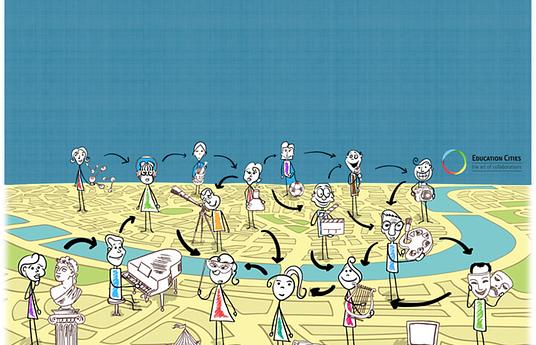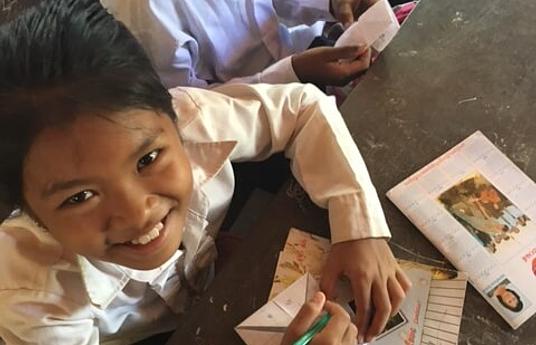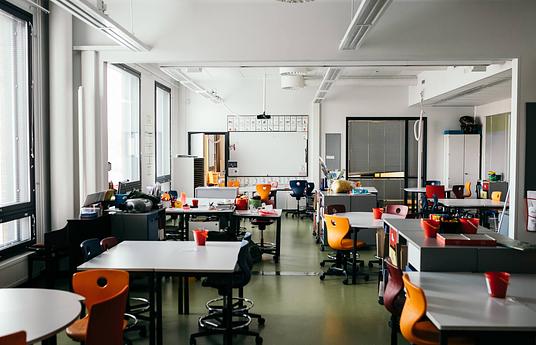How do we change the system? That’s a question that education specialist Ken Robinson gets asked, a lot. Robinson told us that ‘step one is to recognise that you’re the system and you can begin to make the change. Second, is that change can build into a movement if people collaborate (...) If enough people change then that’s a movement. And if enough people move, and move in that direction, then that’s a revolution.’
Yet for some, that revolution feels a long way off. Around the world, teachers are burdened with unmanageable workloads and expectations, carrying this weight by themselves. In many lessons students are still expected to work independently, copy from the board, listen to the teacher. Meanwhile, families and community members operate separate to school, not willing or able to contribute their skills, talents and efforts. With all of this isolation and squandered potential for collaboration, it’s no wonder people want to change the system.
Working together to bring change seems obvious. So why, in many school systems around the world, isn’t this a reality? Robinson explains, “In many countries they focus on competition, whereas some countries such as Finland have an emphasis more on collaboration, and that’s a powerful impetus for change.”
Collaborative teaching practice
Collaborative teaching is revolutionizing the profession. We previously wrote about co-teaching, and the many benefits this can bring. Allan Kjaer Andersen, Principal of Ørestad Gymnasium, in Copenhagen, told us that the most important and successful thing the school had done was to organize teachers into teams. He explained, “‘They help each other, inspire each other, learn from each other and produce together. (...) I think the collaboration of teachers is the key to every change in school.’ When given the chance, many teachers thrive on collaboration with their colleagues, knowing it’s an opportunity to develop their practice, share support and, if they’re lucky, reduce burdensome workloads.
With the world increasingly connected, teachers no longer have to be in the same building, or even the same district, to collaborate. Harnessing the potential of the web, Scientix provides an online community for Science teachers across Europe. Teachers come together to keep up-to-date on what’s happening in their field, as well as to share best practices and resources through workshops and events.
Teachers without Borders connects Finnish educators with Cambodian teachers and trainees, who they provide with continuous professional development and pedagogical support. Cambodian teachers will be visiting the teachers in Finland who have helped to develop their pedagogical practices, to see the famed Finnish school system in action.
Students working together
With the role of student and teacher in modern classrooms evolving, peer learning is transforming what it means to teach. VerDi is a peer learning approach being trialled in some Finnish schools, where digital skills are passed on by students, rather than teachers. This method can increase confidence and interpersonal skills as well as cement knowledge, as we all know that the best way to know if you understand something is to try and teach it!
Maarit Rossi, Global Teacher Prize nominee, and founder of Paths to Math, spoke with us about the importance of social learning, explaining, ‘Adolescent students come to school because their friends are there - they are rarely in school for school. We have to take into consideration that they want to be together, and so they should be given the possibility to learn together collaboratively.’
Collaborative learning isn’t just about keeping students happy at school, though. When you think of it, it’s rare for adults to work solely by themselves. Children need ample opportunities to collaborate and build interpersonal skills, as these factors will likely shape their future success and happiness in the world of work.
Acknowledging the importance of student collaboration, Ylöjärvi Upper Secondary School is implementing team learning in the form of a week filled with phenomenon-based learning experiences. Not only will student collaboration become a part of the school culture, but it is hoped that overall school satisfaction will increase and that learners will have the chance to develop future workforce skills.
It takes a team
Let’s not forget, parents can play a significant role in education too. Parent-school collaboration is on the up and the benefits shouldn’t be underestimated.
With the right support, family members can become useful and motivational classroom helpers. The ‘Über’ for Parents experiment in Finland aims to develop and pilot a digital tool that connects teachers with parents eager to volunteer their expertise in class. Parents could teach anything, from arts to solar power to robotics. This collaborative approach to teaching could help to boost students’ subject specific knowledge, as well as to broaden their horizons.
Opportunities for collaboration don’t stop there, the wider community has something to offer too. Education Cities, in Israel, believe that schools have a lot to learn from their cities, and cities have a lot to learn from their schools. The approach develops the art of collaboration – in the classroom, at school and in the city, by turning the city itself into a learning hub. Every enterprise, be it a theatre, a company or a soccer team, is an invaluable resource to enhance and promote real world learning. A whole generation of students are actively involved and invested in their communities, learning that not only does their community help to shape their growth, but they can help shape their community.
What’s the future?
It’s clear that when passionate and driven educators collaborate, working on a common goal, we start to see things happening. Students, teachers and the wider community are working together to create the change they’ve been waiting for. How do we change the system? It’s already changing.




